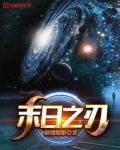Chapter 632 Cycle
"The countdown begins..."
"10...8...0...start!"
Hydrogen is injected into the prototype's six Levis rings.
However, there are differences in the injection time.
In the first Levis ring into which hydrogen was injected, the magnetic field quickly bound the hydrogen, and the tail field devices were activated instantly. The hydrogen was rapidly accelerated and then passed through the gamma-ray plasma heating device.
The heating limit of 1.27 billion degrees Celsius instantly breaks down hydrogen molecules into hydrogen ions, and they are extremely hot hydrogen ions.
The hot and fast hydrogen ions are rapidly approaching sub-light speed.
In less than 36 seconds, the temperature and speed of the hydrogen ions in the Levi's ring reached a critical point.
Next second.
The hydrogen ion fluid begins to undergo a nuclear fusion reaction, which is very intense and rapid. The amount of hydrogen elements injected has been calculated to just keep the nuclear fusion level at a controllable level so that the nuclear fusion reaction will not destroy the equipment.
As a chain reaction of nuclear fusion begins to occur inside the Levi's ring, the heat energy inside its ring-shaped pipe soars rapidly, and at the same time, a portion of high-energy neutrons are ejected in all directions.
At this time, the neutron absorption layer wrapped inside the pipe began to receive these high-energy neutrons. This is a nano-absorption layer composed of lithium-carbon material. Although it is only 12 cm thick, it contains layers of graphene, and a layer of lithium nano-film is sandwiched between the two layers of graphene.
High-energy neutrons cannot break through this neutron absorption layer. The high-energy neutrons ejected by nuclear fusion will convert some carbon and lithium into radioactive isotopes.
Therefore, the lithium-carbon neutron absorption layer has a service life and can usually only be used for about 75 days before it must be replaced.
This is not a problem on Earth, but on a spacecraft, we must consider the issue of replacement and replenishment of lithium-carbon materials.
As for how to replenish lithium-carbon materials, Carl's team has created a set of secondary recycling technology for nuclear reaction products.
The principle is very simple. During the multiple nuclear fusion reactions of the Levi's ring, lithium and carbon will be produced at different stages, so this part of lithium and carbon can be recycled.
The recovery system is located in the spiral magnetic field device.
Three minutes later, all six Levis rings completed the nuclear fusion cycle, and through the gold-based thermoelectric conversion system, the temperature inside the Levis rings was firmly controlled at 1.27 billion degrees Celsius.
A large amount of thermal energy is converted into electrical energy, part of which is used to maintain the system's magnetic field, tail field, and plasma, and part of it is converted into power.
This is the function of the composite helical magnetic field device.
The auxiliary system continuously injects various material powders into one of the open spirals. These powders are quickly ionized into plasma and accelerated by the magnetic field and tail field.
The plasma is accelerated to 25% to 30% of the speed of light.
The blocking ceramic wall set up behind the prototype, 1,000 meters away from the prototype's nozzle, was still emitting dense sparks, and the surface temperature soared wildly.
Obviously, this is the high-temperature and high-speed plasma ejected from the engine nozzle, acting on the barrier wall.
In less than 10 minutes, the surface temperature of the first barrier wall exceeded 5000 degrees Celsius. Coupled with the impact of a large amount of high-energy plasma, even the high-temperature resistant ceramic material began to melt.
Inside the control room of the test platform.
Mikoyan took a look at the power data. The power of this engine was amazing. The high-energy plasma that was ejected brought a very strong reaction force to the engine itself.
And these reaction forces are the driving force that propels the spacecraft forward.
Mikoyan was very happy: "Karl, it seems you succeeded."
However, Karl did not open the champagne at halftime. He smiled and shook his head: "It's hard to say yet because it hasn't been 24 hours yet."
Mikoyan believed that the prototype had been successful. After all, it was the first one, and even if it did not last 24 hours, it could still be improved in the future.
He stroked the stubble on his chin and said, "This power is powerful enough. If it is installed on a Qinglong-class space battleship, the speed is estimated to soar to 6,000 kilometers per second."
"2% of the speed of light is no problem." Carl is very clear about the upper limit of this engine.
Based on the combination of nuclear fusion power and sub-light-speed plasma engine, the theoretical upper limit of the speed of this system can reach 5% of the speed of light, and there is no way to go higher than that.
At this time, reaching 2% of the speed of light is not too difficult.
"Report, the reaction products can be recycled..."
Karl quickly ordered: "Start recycling immediately."
At this time, among the six Levis rings of the prototype, the nuclear fusion in the Levis ring that was the first to be injected with nuclear fuel has already reacted to the lithium stage.
Therefore, the system began to automatically open the magnetic field connection device. After the magnetic field was adjusted, the lithium element that turned into plasma was quickly sucked into another closed spiral magnetic field device.
The high-temperature and high-speed spiral magnetic field that enters the spiral magnetic field has its heat energy quickly absorbed by the gold-based thermoelectric system and then is sucked into the recovery device by the electric field.
In this way, the spacecraft can continuously produce lithium-carbon elements using hydrogen and helium elements through nuclear fusion reactions.
Although the lithium carbon element produced in this way also contains some radioactive isotopes, the two can be separated.
This system is not very useful for spacecraft operating within the solar system.
However, for spacecraft flying in interstellar space, this system is indeed crucial, because it can ensure that the spacecraft itself can obtain a steady supply of lithium-carbon, thereby maintaining the neutron absorption layer of the nuclear fusion power generation system.
As for why the neutron absorption layer does not use other elements but lithium-carbon nanomaterials?
The reason is very simple. It is not that other elements cannot produce neutron absorption layers, but that other elements cannot be artificially produced.
For example, metal materials such as tungsten and platinum can also be used as raw materials for the neutron absorption layer. The problem is that tungsten and platinum are rare elements, and their content in interstellar space is very small, so it is difficult to obtain supplies by collecting stardust and asteroids.
Lithium carbon is different. It can be produced through controlled nuclear fusion. Its raw materials are hydrogen, helium, beryllium and boron. As long as there is hydrogen, it can be produced continuously.
This is also why Carl's team chose lithium carbon as the material for the neutron absorption layer.
Hydrogen is the most readily available raw material in interstellar space.
It is entirely possible to install a stardust collection pot on the head of the spacecraft, or to search for asteroids containing water along the way.
In this way, the spacecraft can obtain a large amount of hydrogen, and through nuclear fusion of hydrogen, helium, lithium, beryllium, boron and carbon can be obtained.
Therefore, many of the internal consumables of future interplanetary spacecraft should be mainly composed of helium, lithium, beryllium, boron and carbon.






